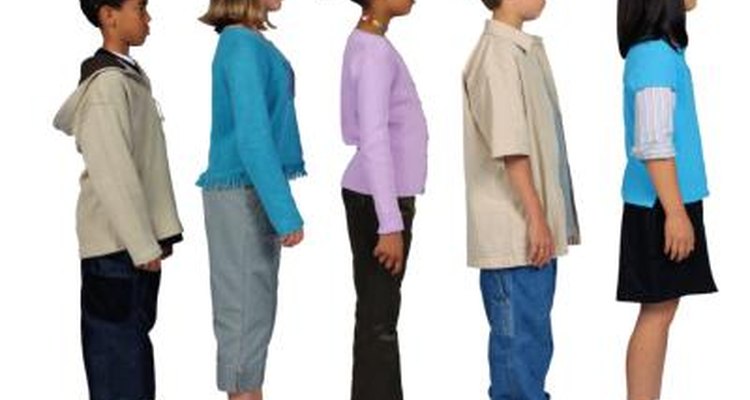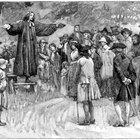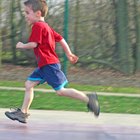
Kids love to play games. Playing follow-the-leader games helps children understand how to listen and obey directions the first time given. It’s a fun way to connect with your children while teaching them a valuable lesson. Follow-the-leader games will help sharpen your child’s ability to hear your voice, listen to your instructions and obey your requests. There are a few follow the leader games that are both fun and purposeful.
Relay
Choose a leader from among the group. Break the rest of the group into two teams and have each form a single-file line. Send the leader to the other end of the room or playing field. Instruct the two teams that they are to follow the commands of the leader such as hop, run or skip. The first person in the each line follows the directions of the leader until they reach the leader. Once they reach the leader, they turn around and head back to their team while following the leader's instructions. The first team to have all the members complete the relay wins.
Blind Fold
Create a simple obstacle course for the children to go through using pillows and other soft objects you have around the house. You can also play this outside with your children’s toys as the obstacles. Blindfold each child and assign a leader to each kid. Have the leader (the person without the blindfold) guide the blindfolded child through the obstacle course. This game will challenge the children who are blindfolded to trust the leader and learn to listen more than see.
Copycat Game
Have the children circle up. Have one child volunteer to be the guesser. Remove the guesser from the circle and place him or her in a room where they can’t see or hear anything. Choose a leader from the remaining children. Tell the children that they need to follow the movements of the leader without making it obvious which child is the leader. Have the volunteer come back and stand in the center of the circle. All the children should begin swinging their arms back and forth with the leader eventually starting to make additional movements that the rest begin to mimic. The child in the center gets three guesses to find the leader.
Related Articles

Outdoor Christian Games for Children

Party Games for Kids & Parents

Fun Games for Sunday School Kids Ages ...

Free Children's Bible Activities Grades ...

Children's Beatitude Activities

Youth Christian Devotion Activities

Middle School Bible Games

Children's Games to Teach About ...

Children's Activities on Moses, the ...

Sunday School Games About Prayer

How to Play the Hugging Game

Children's Activities on Lying

Kid's Games for Hallelujah Night

Fun Outdoor Ball Games

Exercises for Verbal Communication ...

Valentine's Day Party Games for School- ...

Adam & Eve Games for Kids

Sunday School Object Lessons for ...

Second Grade Holiday Party Games

Fun Running Games for Kids
References
Resources
Writer Bio
Joey Papa lives in the Tampa Bay area, and has four years of experience as a professional copywriter. His years of experience and a bachelor's degree in communications from Oral Roberts University, provide him with creativity, technique and a comprehensive viewpoint to complete a wide array of writing styles.
Photo Credits
Amos Morgan/Photodisc/Getty Images